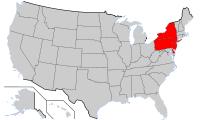Events/Timeline
1607 - Due to little agricultural experience, the English settlers from Jamestown,Virginia of 1607 did not have sufficient skills to provide sources with food. Without food, the "starving time" slowly arrived as sources were depleted. Local Indians denied helping them and Captain John Smith, explorer, adventurer, and soldier, placed rigid discipline and agricultural cultivation that helped provide food sources. A gunpowder accident forced Captain John Smith to come back from England, but the colonists had to struggle through the chaotic winter, which started the "starving time".
1637 - Attempting to reconcile differences, the Native Americans and English settlers continued to have feuds and this foreshadowed the
Pequot War of 1637. The Natives and the English were on a war against each other, as well as other Indian tribes away from Connecticut. Leaders Captain John Mason and Captain John Underhill burned the Pequot villages with the help of Mohegan and Naragansett tribes (
http://www.colonialwarsct.org/1637.htm).
1620-1640 - There was religious conflict in the Church of England that worsened in 1625 when King Charles I became king. Charles I eliminated Parliament to neutralize his enemies, whom included some Puritans. Because Puritans wanted to practice their religion, they quested for freedom. These motivations lead them to gather their family into groups and settle in America. These English settlers traveled towards Massachusetts and West Indies islands for their commodity. The
great migration heavily populated the English colonies, who were no longer starved.
1675-1676 - As problematic as the disagreements during the Pequot War and cause of the great migration, the Pequot War influenced
Philip's War. Greatly ignored, this even was another cause from the English and Indian sides' fighting. Though not the actual name, Philip was a translated version of the name Metacom, Metacomet, or Pometacom. There was much property damage as well as deaths on both sides of the war.
1675-1676 - Virginians such as Nathaniel Bacon, a wealthy Englishman, labeled all Indians in general as enemies. They believed they had to "defend" themselves and thus started his own rebellion, known to us as
Bacon's Rebellion. Bacon and some of the colonists were now against the Natives.
1688-1689 - A union of parliamentarians overthrowed King James II of England because his policies of religious tolerance became opposed. The king was opposed by his troubles with Catholicism and his close ties with France. This became known as the
glorious revolution of England.
1689-1697 - Around the same time as the glorious revolution, the English and French were at a war for the ownership of North America. This war was named after King William III of England, King William's War. The French were allied with some Indians. These allies fought on English colonial settlements and raided some villages along coasts. During the time, many colonists were terrorized and killed by Indians.
1692-1693 - In Massachusetts,
Salem Village, approximately 200 people were accused of practicing
witchcraft. 20 of those people were executed. The accusations were a form of injustice and paranoia from the colonists. The
trials projected religious intolerance.

Girl accused and tried for practicing witchcraft.
1703-1791 - From the amount of restrictions applied when joining a religion, many had left. That is until Europeans wanted to revive religion. The
Great Awakening swept over western Europe. The revival received contributions from the conditions in the colonies such as rationalism in New England.
1739 - British colony of South Carolina experiences high rates of slavery, including the death of sixty people. An Angolan named Jemmy led twenty slaves to organize a rebellion in the banks of
Stono River. Most of the rebels were killed by white colonists while the group marched. Remaining survivors were traded in the West Indies and sold. The
rebellion proved to be successful in a way that the slaves were treated minimally better than before.


 Girl accused and tried for practicing witchcraft.
Girl accused and tried for practicing witchcraft.